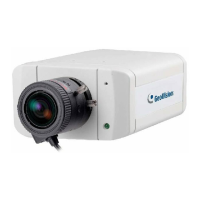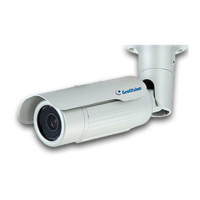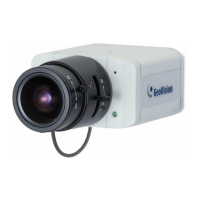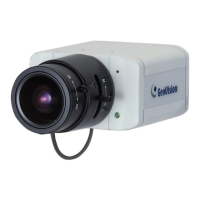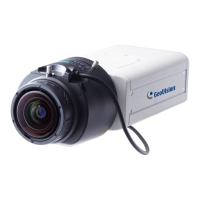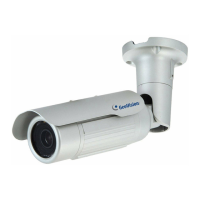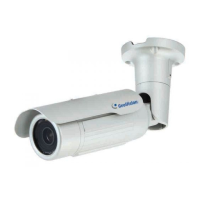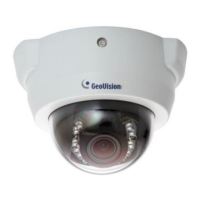
Do you have a question about the GeoVision GV-BX2700 Series and is the answer not in the manual?
| Brand | GeoVision |
|---|---|
| Model | GV-BX2700 Series |
| Category | Security Camera |
| Language | English |
Specifies system requirements for accessing camera operations via web browser and supported browsers.
Explains how to access the live view of the camera by obtaining its IP address.
Details steps to find the camera's IP address using the GV-IP Device Utility.
Guides on setting up network configurations like dynamic, static, or PPPoE IP addresses.
Instructions for setting up wireless network connections for the camera using the client mode.
Outlines manual focus adjustment procedures for specific camera models, including cap and screws.
Introduces basic configurations like date/time, user accounts, network gateway, and image adjustment.
Provides steps to access surveillance images by entering the camera's IP address in a web browser.
Describes the Live View window interface and its controls when accessed via Internet Explorer.
Explains the functions accessible through the control panel of the Live View window.
Details how to configure alarm notifications for motion and input triggers.
Explains how to activate and use the Visual PTZ control panels for camera operation.
Details the I/O Control window for viewing status and triggering outputs.
Covers video settings, motion detection, privacy mask, text overlay, tampering alarm, and visual automation.
Details how to configure video signal type, resolution, frame rate, and bandwidth management.
Guides on setting up motion detection areas, sensitivity, and alarm triggers.
Covers input/output settings and PTZ camera configurations.
Covers setting up e-mail, FTP alerts, and notifications to central monitoring stations.
Guides on configuring e-mail alerts for trigger events, including captured images.
Guides on starting manual, scheduled, or input-triggered monitoring.
Covers setting up schedules for recording and I/O monitoring.
Covers basic but important network configurations for connecting the camera to a TCP/IP network.
Guides on selecting between Static IP, DHCP, and PPPoE based on network environment.
Includes settings for date/time, user accounts, system operations, and firmware version.
Details how to format and manage storage devices like memory cards and NAS servers.
Explains how to change login names and passwords for Administrator, Guest, and FTP server accounts.
Details how to enable the recording function by inserting a memory card and configuring related settings.
Outlines methods for playing back recorded video files from the camera.
Guides on playing back files from the memory card using the Ext2Fsd program.
Provides instructions for updating the camera's system firmware using the web interface or utility.
Details how to back up and restore camera configurations using the IP Device Utility.
Guides on changing the login password for GV-IP cameras using the GV-IP Device Utility.
Guides on synchronizing and downloading recordings from micro SD cards using GV-SDCardSync Utility.
Step-by-step guide to configure and add IP cameras to GV-DVR/NVR systems.
Guides on manually connecting GV-IP Cameras to the GV-VMS software.
Describes how to use the Multi View feature to monitor and manage cameras remotely.
Explains how the Center V2 system monitors and manages cameras and I/O devices.
Describes the Vital Sign Monitor system for managing cameras and I/O devices under low bandwidth.
Guides on accessing live view and playback on mobile devices using the GV-Eye application.
Details required security settings in Internet Explorer 8 to enable ActiveX controls for camera access.
Provides syntax for RTSP commands for audio and video streaming with different players.
Lists camera models and their support for DC Power, AC Power, and PoE.
Provides a table showing compatible GV-DVR/NVR/GV-VMS versions for various camera models.
Guides on enabling the IR LED illumination function on the camera's web interface.
Explains how to disable the status LED to prevent reflection on the camera cover in low light.
